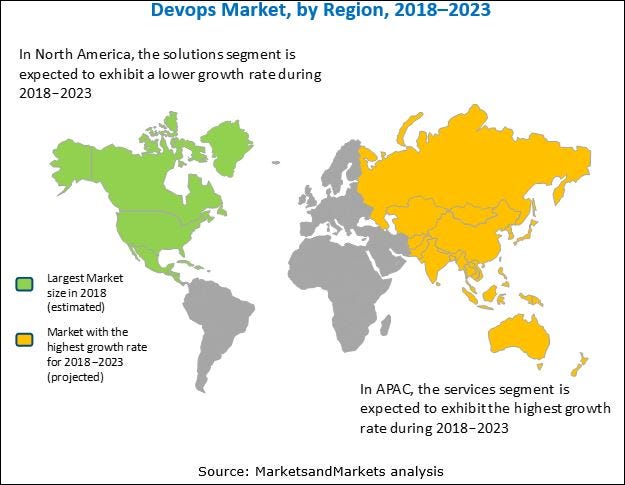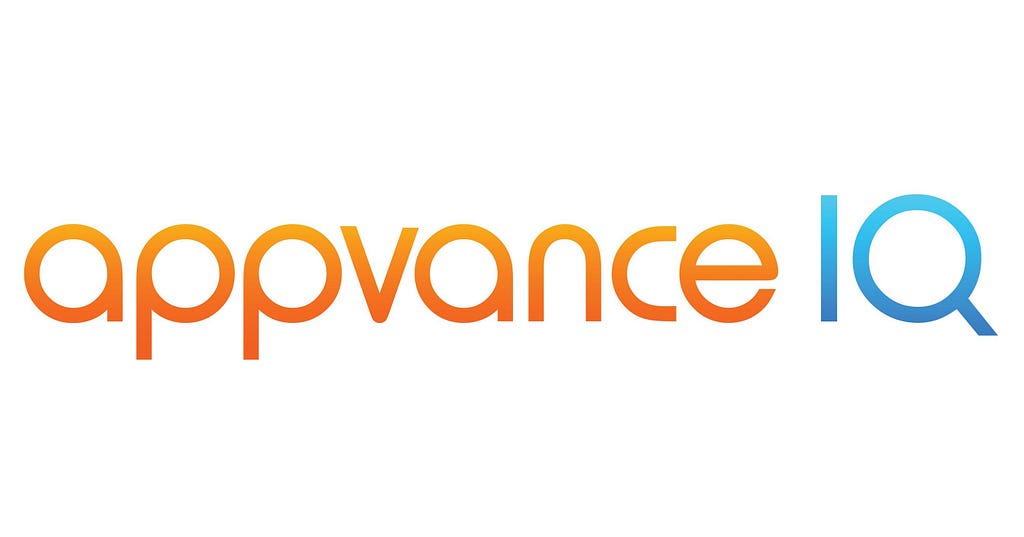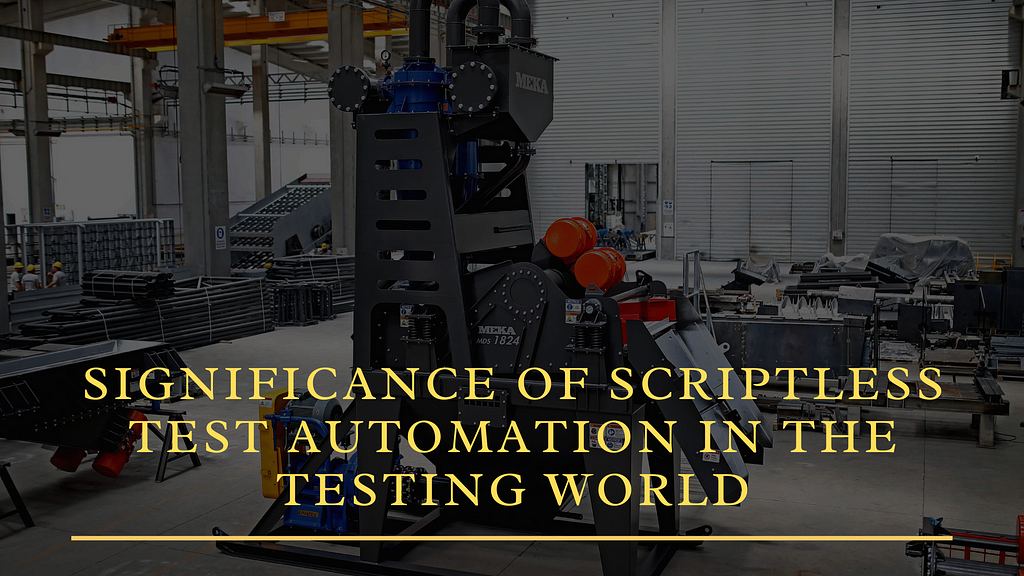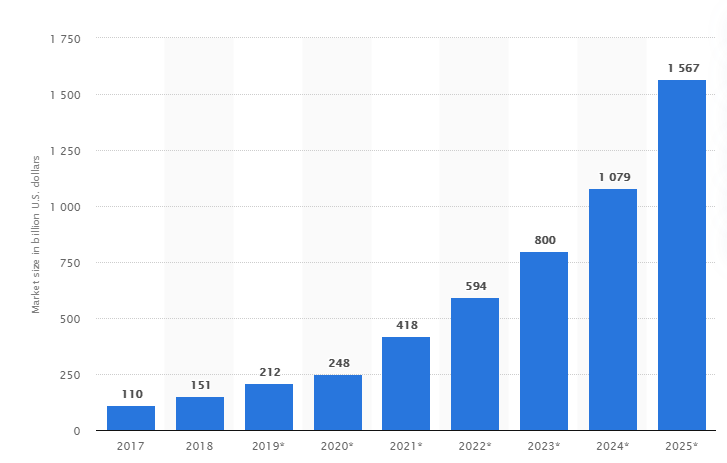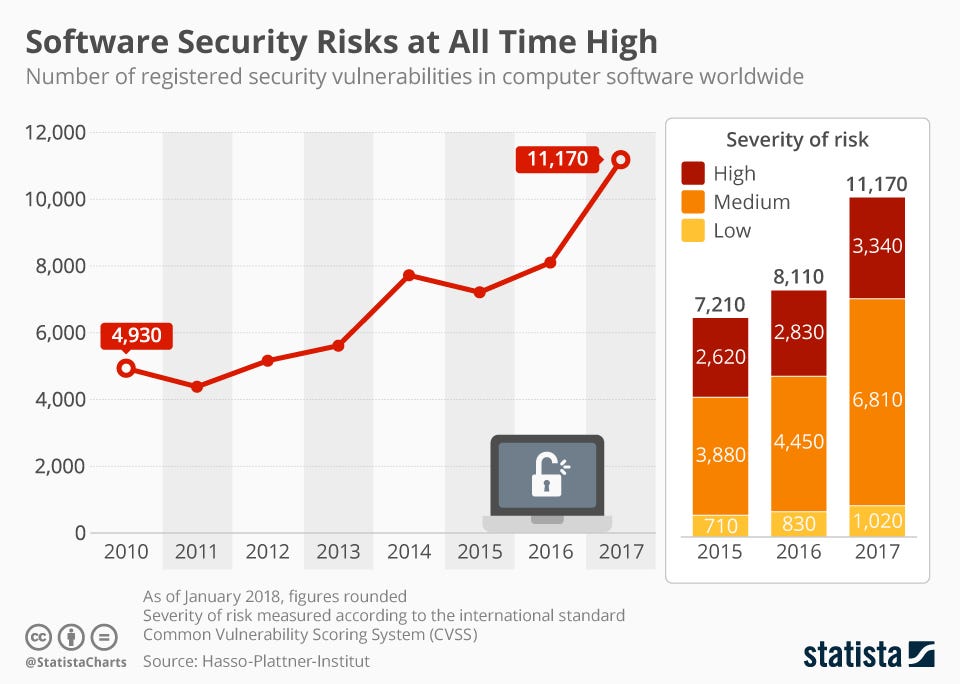Future Scope and Market Snapshot of Selenium Automated Testing

As the generation has progressed today, there are diverse options in the market for test automation tools accessible. You simply need to align with the project need- project size, resources involved, turnaround time, and mainly the automation required. Companies have been leveraging established licensed test automation tools such as TestingWhiz, QTP, Ranorex, TestComplete, QA Test, Silk Test, QA Wizard Pro, and Rational Robot for distinct testing requirements.
Simultaneously, there is an increasing demand for Open Source automation tools such as Selenium, Robotium, SOAP UI, JMeter, JUnit, WebDriver, to take care of functional testing, regression testing, and performance testing. Whilst working on an automation testing plan, Selenium testing is one such suite used for sufficient test measures. In this article, we will discuss test automation best practices for selenium test automation and the future scope for this framework that is being adopted by Top QA Testing Company.
What Is Selenium Automated Test?
Selenium is the most extensively used open-source test automation tool for software testing and in today’s DevOps and agile processes to deliver quality applications. Generally, there are four distinct suites of tools, they are Selenium IDE, Selenium Webdriver, Selenium RC, and Selenium Grid. Selenium Testing is highly beneficial for web interaction testing as well as regression testing of the software. It is also best suited for all web apps amid distinct browsers and delivers important results for all tests and is an easy-to-use tool with effective traits.
The QA specialists can use a huge number of programming languages for developing test cases using Selenium counting Python, Perl, Java, Ruby, C#, C++, PHP, etc. That said, tools like Selenium supports the following kinds of testing:
- UI Testing
- Regression testing
- Functional testing
- Smoke testing
- Sanity Testing
- Responsive Testing
- Integration Testing
Selenium has several suites of tools that function to meet the various requirements of companies. These are
1. Selenium RC:
Selenium Remote Control or RC is the first automated web test tool or suite that was earlier known as JavaScript Executor. It is one of the core main reasons for the Selenium to become a crucial tool and permitted users to make use of a programming language they desire. Remote Control supports a range of programming languages counting C#, Java, PHP, Perl, Python, and Ruby. The languages that Remote Control offer makes it a vital Selenium component plus, RC has served as the flagship tests framework of the complete Selenium project for an extended period.
2. Selenium IDE (Integrated Development Environment):
Integrated Development Environment (IDE) is a simple-to-use tool that comes as an add-on for browsers like Mozilla Firefox and Chrome. This type of tool provides a great number of functionalities like prototype testing, recording and playback, and it can export the test cases to any language. It is generally used in developing your Selenium test cases. The crucial function of this tool is to record all the user’s activities in the browser and hence can be used to build up your Selenium test cases. Furthermore, it has proven to be a time-saver and extraordinary way to learn Selenium script syntax.
3. Selenium WebDriver:
This is one of the most popular tools or suites that help to communicate directly between the code and the browser. This kind of tool doesn’t require any manual technique like the Selenium Server. It helps to communicate directly between the code and the browser. The WebDriver is far better option than both RC and Se IDE. It uses browser automation APIs provided by browser vendors for controlling browsers and running tests. Moreover, it is highly accessible and stable to automate the web browser’s actions. In addition, it controls the browser straight by communicating with it rather than relying on JavaScript for Testing.
4. Selenium Grid:
Selenium Grid is the last selenium component and is used to execute distributive or parallel tests. Besides such functionalities, this tool enables performing test scripts on distinct machines across operating systems and browsers. In addition, when the test cases are triggered, Grid automatically performs them by the remote end. It is very crucial to perform your tests simultaneously on distinct OSs and browsers to control time. Hence, it is one of the good elements of Selenium.
Why Selenium Test Automation?
The majority of people would give credit to the ‘free’ or open-source aspect of the whole Selenium Test Automation deal; however, the advantages are way beyond the obvious cost factors. Businesses are considering the same and leveraging the test tool to test Web apps. Amongst the countless reasons, the core success factor for Selenium is that the testing can be coded in manifold programming languages, where they can be performed straight across distinct web browsers and OSs. This incredible tool is considered a strong tool; as its features are easy to use, and provide simple UIs that facilitate meeting 90% of the needs of web app testers.
It supports various browsers, flexible, weaves into various programming languages such as.NET, JAVA, Ruby, PHP, Perl, and gives the option to utilize a wide range of IDEs with the tester’s choice of programming language. As the specialists say, not every testing can be automated, besides automation has to be a strategic decision. The process and planning have to concentrate on optimizing the tool and attaining maximum test coverage.
Crucial Features of Selenium Test Automation Framework:
1. Simple of Execution:
Selenium test automation framework is simple to use the tool. The user interface assists in the formation and execution of test scripts.
2. Open-source accessibility:
Selenium is a free or open-source tool that is accessible publicly with no extra charges. With Selenium, it is simpler to custom the code and boosts the quality of the predefined functions and classes.
3. Support for Language and Framework:
This amazing tool supports a great number of powerful programming languages like Ruby, Python, JavaScript, Java, C #, and Perl. In addition, to help the test script writings for selenium automated testing, each supporting language has devoted frameworks.
4. Parallel Test Execution:
This Selenium feature assists to save the time and efforts of the testing teams. This test automation tool helps to perform multiple tests in parallel which results in less implementation time.
5. Continuous Updates:
This type of automated test tool is supported by several active communities, which outcomes selenium to get an upgrade with constant or frequent releases. The outcome of having an active community is that the upgrades are simple understandable and accessible for any user. It is the best tool when contrasted to other tools as it gives several traits with the zero-cost requirement.
6. Flexibility:
In the test lifecycle, test management is crucial to make the practice of tests effective. With the features of refactoring and regrouping the test cases, the use of the Selenium tool assists the developers and QA testers to execute rapid changes in the code. Hence, this feature reduces duplications, the complications, and enhances maintenance.
7. Multi-browser Assistance:
This tool is compatible with several browsers. It is compatible with Internet Explorer, Opera, Chrome, Safari, Mozilla Firefox, and other browsers. Thus, there is no need for the QA tester to rewrite the scripts for each browser separately and hence one script is a better fit for every browser.
8. Highly-Portable language:
The test automation tool needs to assist the distinct OSs that are used by businesses. Besides, when selenium is used as the test automation tool, there is no obstruction as the tool assists distinct OSs such as Mac, Linux, UNIX, Windows, OS, etc.
Statistic Overview
Enterprises or Businesses are implementing proprietary/ commercial tools and frameworks as well as free tools to automate testing and bring effectiveness to the testing cycle. Test automation has become a crucial section of an organization’s development and test strategy with progressing requirements for speed and quality.
· As per the TMR (Transparency Market Research) the global automation testing market, which in 2015 had a valuation of US dollar $12.91 billion, is anticipated to attain US dollars 85.84 billion by 2024. Interestingly, the test automation market in North America, which stood at US dollars 5.70 billion in 2015, is likely to be worth US dollars 29.78 billion by 2024. This states the potential of the Test Automation market and the requirement for an apt tool to align with the requirements of the project.
· The worldwide test automation market size is likely to hit US$ 20.7 billion in 2021 to US$ 49.9 billion by the year 2026, at a CAGR (Compound Annual Growth Rate) of 19.2 percent during the forecast period. The test automation market is progressing due to the speedy adoption of sophisticated technologies.
Significance of Selenium Test Automation:
Selenium test automation tool is obtainable as free or open-source and with its simple to use; selenium continues to be highly preferred for automated tests. First and foremost, it is used for automating web apps as it is fast and simple to use the record as well as playback traits. Plus, the testing can be coded in various programming languages and executed amid distinct web browsers and OSs. Additionally, it assists to export the scripts that are recorded to other languages like C#, Java, Python, JavaScript, Ruby, or PHP. Interestingly, there are definitely best practices for automated test frameworks that businesses must adapt to leverage the best outcomes with automated testing.
What Are The Best Practices for Selenium Test Automation?
- Make use of the Behaviour Driven Development Framework
Whilst considering selenium best practices, the BDD is the most preferred development approach for selenium automated tests that allows the QA specialists to prepare automation cases without difficulty. The test cases crafted by the testers with the use of the Behaviour Driven Development Framework make it simple for every person to understand without any requirement for coding knowledge.
· Choose Early Testing as well as Repetitive Testing
One of the best practices for availing of the best traits of selenium test is to do early and recurring testing. Implementing the attributes straight from the phase of requirement gathering and by starting early, the developers and testers can make sure that the app is adequately responding to the necessities of the end-user. The reward of this approach is that the testing end results can be provided to the software developers right on time prior to the work being ended. It will save extra expenses and time in the later run.
- Set up Testing details or reports
The progression is just possible if you can keep track of what is going on under the test procedure. You need to ensure that you are keeping track of the Selenium Testing progress to keep track of its outcome productivity.
- Task Assigning
Task division is yet another important practice that you require to avail of Selenium Tests. Based on the skill levels of varied test team members, divide the test cases and test suites separately.
- Test Detection
Always decide your objectives as a QA tester and determine which test case for automating first. Always go with testing the cases that include colors, fonts, and layouts first. Afterward, you can go forward to other test cases too but in a synchronized order.
- Testing Design Earlier Automation
Bear in mind, the formation of the test scenarios or cases before you set it up for selenium automated testing. Sending the app straight into test automation under selenium can result in depressingly. For the entire success of the selenium test, prior arrangement and strategy building are crucial.
- Selection of Right Tool
There are several distinct types of selenium test tools available for quality tests. However, you need to be specific about which is the one crucial for you. Consider the requirements and necessities of the clientele along with the compatibility of it with the software before you select the appropriate selenium tool.
- Don’t Automate Test For Unsteady Components
The business owners might wish to modify a few components in the software over time. In that situation, if you are testing on those unsteady components that are more expected to get changed over time; you must require testing it over and over again. Therefore, it is better not to automate the test for uneven elements.
- Attempt & avoid Graphical User Interface (GUI) Automation
Graphical User Interface (GUI) Automation should be avoided if there are choices as too much of it creates irreversible chaos in the software. The automation engineers will assist derives the requisite User Interface tests that can go for automation.
- Seek Rapid Feedback
Put up small release cycles, which will sooner or later give it faster market time for more feedback. You will get constant feedback from stakeholders, functional experts, testers, and others to make sure spotting and fixing errors is on priority.
What is The Future Scope or Prospect of Selenium Test Automation?
There are loads of reasons why Selenium is still considered to be the most promising test automation tool for the future. Over the past few decades, Selenium technology has managed to capture the attention of the complete web and software testing industry. Thanks to its free or open-source platform and wide-ranging support for test automation that has formed solid benchmarks for quality.
The automation future scope is huge in the market. This was the time when Automation Testing works in the technical world. It had 2 primary goals, to be a reliable Software Testing technique and meet the needs in less cost, time, and labor. It gives myriad advantages counting compatibility, speed, cost-effectiveness, and more. Selenium also supports a plethora of languages comprising Java, Ruby, Perl, Python, PHP, and C #amongst others. The automation that commenced with Selenium has now taken a fresh turn with the introduction of Machine Learning and Artificial Intelligence. The initiative of incorporating such futuristic technologies into the test procedure has not only eased things, however, has laid the foundation for digital transformations.
Even though it may look like a random statement, the complete software testing arena is making speculations on the expected alteration that Artificial Intelligence technology might bring into the business process. Even though Selenium automated testing has exposed wide performance potential all these recent years, the prospect for transformation through Artificial Intelligence technologies is something that can’t be overlooked. Besides, the use of tools like selenium has to enable enhancing the approach towards manual tests, consuming zero time on recurring test cases. As the open-source advancement, Agile and DevOps methodologies have been the main contributory factors to the transformed approach towards test; selenium has formed its repute as a test automation tool by sticking to such factors.
Particularly, when the first-ever selenium analysis or survey showed that 61 % of customers stick to the selenium framework and 59.5 % of respondents employ selenium for browser management, it becomes even more significant to keep a check. The ease of continuous development and continuous delivery has assisted the test fields to experience compatibility, rapidity, cost-effectiveness, and lots of other benefits. As long as it is concerned to this incredible tool being the extensively accepted and most-preferred test automation tool, we have a few reasons that could defend the statement:
- Extended Support: One of the good reasons why QA specialists prefer using Selenium for all their automated testing requirements is the support for varied browsers and OSs. This makes it well-situated to measure the software performance across distinct platforms such as iOS, Android, Linux, Windows, Mac, or other OSs. Apart from this, Selenium also supports all the test practices made on famous browser extensions like opera, firefox, Safari, Chrome, and others.
- Supports Multiple Programming Languages: This amazing tool allows QA specialists to write scripts in multiple programming languages as per their preference. Either Perl, PHP, C#, Java, Python, Ruby, and more. In addition, this automated tool even makes users pick the Application Programming Language based on the programming language.
- Free To Utilize: Selenium is a free or open-source test automation tool that makes it a free-to-use platform for any sort of test requirements. It doesn’t count any recurring fees making the whole job of development lucrative and hassle-free. Whether you are a big giant organization or a small development enterprise, selenium has the potential to carry out all sorts of quality checks or analyses.
- Selenium IDE: While you want to debug, record, or edit any test cases, selenium Integrated Development Enterprise comes in handy with powerful tools to execute such activities.
- However, even after gaining so much reputation, the test automation on Selenium is likely to make an impact on the testing future leading the world towards bigger things sticking to the words of William A. Foster, “Quality is never an accident; it is always the result of high intention, sincere effort, intelligent direction, and skillful execution; it represents the wise choice of many alternatives.”
Limitations and Shortcomings of Selenium Testing
Even though selenium is a well-admired tool that proffers an extremely stable environment for test automation, there are still several shortcomings using the platform that is making way for technologies such as Machine Learning and Artificial Intelligence to overtake. Some of these comprise:
- The hassle to form test cases sometimes makes it arduous for testers to accomplish their objectives on time.
- Secondly, using test automation tools like selenium includes a tricky test environment set up in contrast to vendor tools.
- It provides restricted support for image tests with no testing tool integration for test management.
- Selenium merely supports web-based apps and that too without reporting facility.
- And certainly, there is no reliable technical assistance and only community assistance is available to get over any features that are not working.
Conclusion:
Concluding it, enterprises or companies must prefer Selenium as a promising test automation tool for automating all their web apps due to its great features. Leveraging the customized selenium automated testing frameworks to accomplish speedier time to market and rapid ROI along with assured quality results. If executed effectively, Selenium can allow better collaboration, speedier turnaround, improved test coverage, effective test data collection, and robust quality mapping of the app.
Overall, Selenium is a powerful tool that can be leveraged effectively by software testers and developers. The best part is that it can be leveraged even without huge knowledge of scripting language. All in all, it makes sure that the application quality is unbroken and the software/ application are market ready. On the flip side, Artificial Intelligence-based test automation has the potential to identify any modifications made to the components, or maybe the field could be interpreted to avoid collapse. This can assist in making testing more and simpler reliable to maintain.
Nevertheless, any sort of technology used to test has some crucial scope for improvement. And hence, crafting them for excellence would require optimal accuracy through Artificial Intelligence and recurrent human intervention. Although the current situation signals a bright future for Artificial Intelligence, if selenium tools could handle to accommodate the correction of current flaws, the prospect of testing can be the best. Furthermore, the present case requires both Artificial Intelligence and selenium automation to function together to deliver productive test outcomes. Well, whatever it will be, it is going to be more promising for the QA community around the globe.
Future Scope and Market Snapshot of Selenium Automated Testing was originally published in Dev Genius on Medium, where people are continuing the conversation by highlighting and responding to this story.



